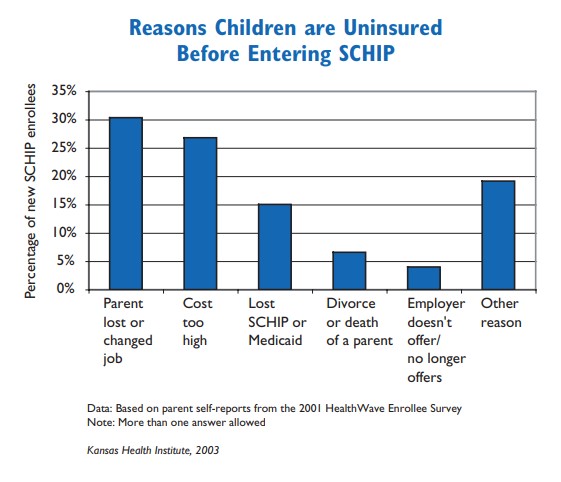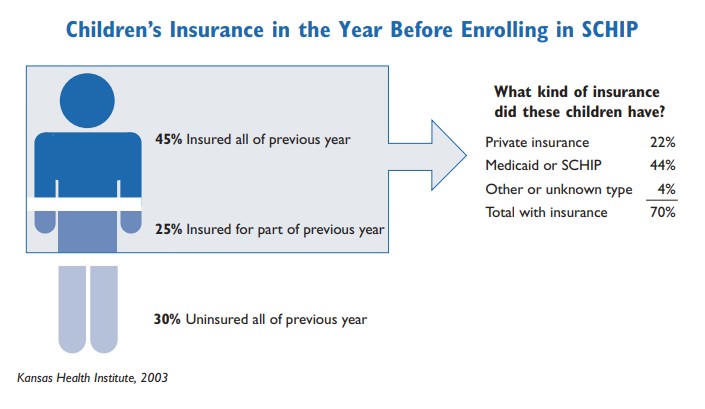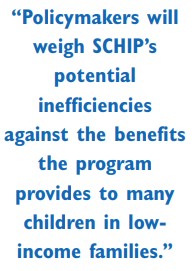Perhaps most surprising is our finding that half of children enrolling in SCHIP (51%) were eligible to enroll in job-based insurance through a parent. Nevertheless, this finding is consistent with several national studies showing that the presence of SCHIP diverts some children away from private insurance, although there is considerable debate about how large a problem this might be.
Why might families enroll their children in SCHIP instead of job-based insurance? Cost certainly plays a role for these low-income families. Even when it is available to them, the deductibles, co-payments, and monthly premiums that go along with job-based insurance may not be affordable, and this cost sharing is almost certainly higher than it is in SCHIP. In addition, SCHIP covers services such as dental care that job-based health insurance frequently does not cover.
These findings suggest that some children enrolling in SCHIP would probably have insurance coverage even if SCHIP did not exist. However, this study also demonstrates the presence of real health insurance need among children enrolling in SCHIP. If they did not have access to SCHIP, at least some enrollees would be uninsured. Moreover, even children with access to alternative types of coverage might be better off in SCHIP because of its lower cost and more comprehensive benefits.
State budget pressures and concerns about SCHIP’s impact on private insurance coverage have led some policymakers to search for ways to better target SCHIP toward those children who most need it. In the meantime, policymakers will weigh SCHIP’s potential inefficiencies against the benefits the program provides to many children in low-income families.



